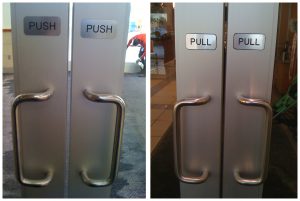This is yet another new series that we are excited to introduce to you – Universal Design for Learning (UDL). The first 4 posts in this series will introduce you to UDL, its 3 tenets, and offer specific examples that you can apply in your own classroom today.
Before we start, think about this question: What have you noticed about learner diversity in your classrooms? What have you had to do to accommodate your students’ different needs and preferences? You can approach this in terms of learning preferences, gender make up, cultural background, English speaking abilities, disabilities, and so on.
The learner profile in postsecondary education continues to become more diversified. Here at OSU, our student make up as of Autumn 2016 is as follows: 49.98% women, 18.89% minorities, 9.76% foreign, 3.39% with reported disabilities; in comparison, Chronicle of Higher Education’s Autumn 2015 snapshot reports 55% women and 43% nonwhite, and the National Center for Education Statistics (NCES)’s 2011-2012 data offers that 11.1% of undergraduates reported having a disability. Furthermore, NCES’s Autumn 2013 snapshot reports that 28% of postsecondary students took at least 1 distance education course, and that 12% of full-time / 48% of part-time 4-year undergraduate students as well as 63% of full-time / 89% of part-time graduate students at degree-granting public institutions were over the age of 25.
UDL is an educational adaptation of the principles of Universal Design (UD), an architectural/environment design concept, which aims to “[make] everything we design and produce usable by everyone to the greatest extent possible” (Roberts et al., 2011, p. 6). UDL offers an learner-focused approach to course design that takes into consideration of your learners’ diverse characteristics, needs, and preferences; Izzo and Bauer (2013) puts it rather eloquently, that UDL “challenges educators [and designers] to rethink the nature of their curriculum, and empowers them with the flexibility to serve a diverse population of learners.”
Both doors have handles. Without the sign, how would you know whether to push or pull? (Source)
UDL draws heavily from research on cognitive neuroscience and learning theories, from which it summarizes that students differ cognitively in 3 main ways:
- Strategy: How we plan, form thoughts, and perform
- Affect: How we become and stay interested/motivated
- Recognition: How we perceive information presented to us
Based on the above, UDL offers 3 major principles, each with a set of guidelines and checkpoints. We will go over the 3 principles in future posts in this series:
- Provide multiple means of expression
- Provide multiple means of engagement
- Provide multiple means of representation
UDL principles are informed by cognitive neuroscience. (Source)
There is a growing base on research on the efficacy of the UDL framework as a whole, and early results have been encouraging. The National Center on Universal Design for Learning also offers a comprehensive overview of the research support behind each of the UDL checkpoints.
In the next post, we will continue our journey into UDL with the engagement principle. Until then, here is a video by the CAST Center that will tell you a bit more about UDL:

